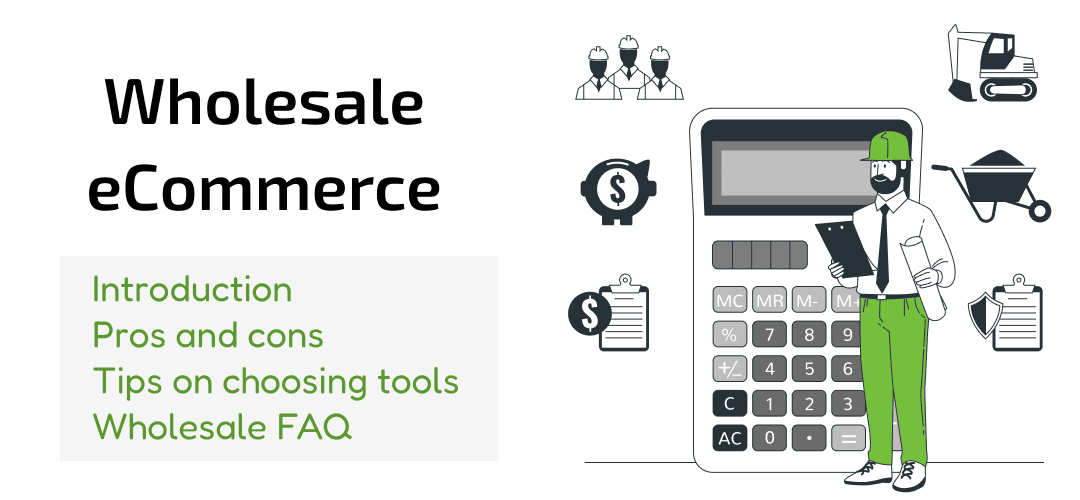
Business-to-consumer or direct-to-consumer sales are probably the first things that come to mind when we think of eCommerce. However, selling in bulk online is gaining momentum among B2B sellers, B2B wholesale suppliers and B2B wholesale distributors. A Wholesale Global Market Report by the Business Research Company predicted that the sector would surpass $50 trillion in 2022 and reach $64 trillion by 2025. Keeping that in mind, it is clear that starting a wholesale business is still and will be a good financial decision.
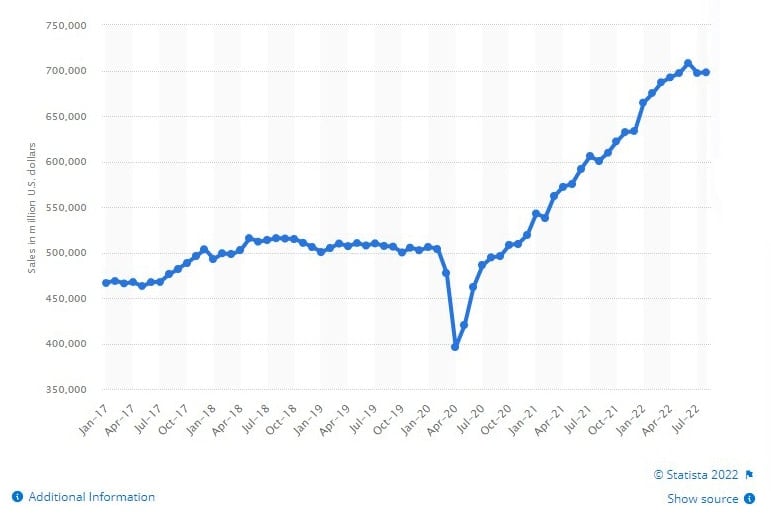
Wholesale eCommerce is the practice of selling goods in bulk to another company rather than to the end customer. In other words, you serve as a middleman between the producer and the store offering its goods. As a result, eCommerce companies easily access a broad range of suppliers, compare costs, and even diversify their product offerings. While manufacturers don’t have to worry about seeking out distributors for their products.
In this post, we’ll discuss the ins and outs of wholesale eCommerce: what B2B wholesale is, how it functions, who can benefit from it, which features to look for in wholesale eCommerce systems, and more burning issues. Stay tuned and find answers to all of these questions!
How wholesale eCommerce works: understanding the essence, B2B and B2C difference
Unlike B2C eCommerce with the consumer-facing approach, B2B wholesale eCommerce is often referred to as ‘big-box’ retail, describing wholesalers that work with enterprise chains such as Walmart, Amazon or Costco. Although the most common type of wholesale is between producers and retailers. However, there are wholesalers who sell their goods to other wholesalers, and wholesalers who sell directly to consumers. Even small businesses that make their own products can be involved in wholesale and sell their goods to suppliers. And the latter then sell these products to the end-user or the retail customer.
In other words, B2B wholesale is the subdivision of the large-scale B2B market. The business purchasing goods from the wholesaler might use them for production or consumption, or could sell them to other companies in lesser quantities for a greater price. However, selling a lot of merchandise at once guarantees financial success, regardless of whether the shop sells the inventory or not. So handling time and expenses are cut back.
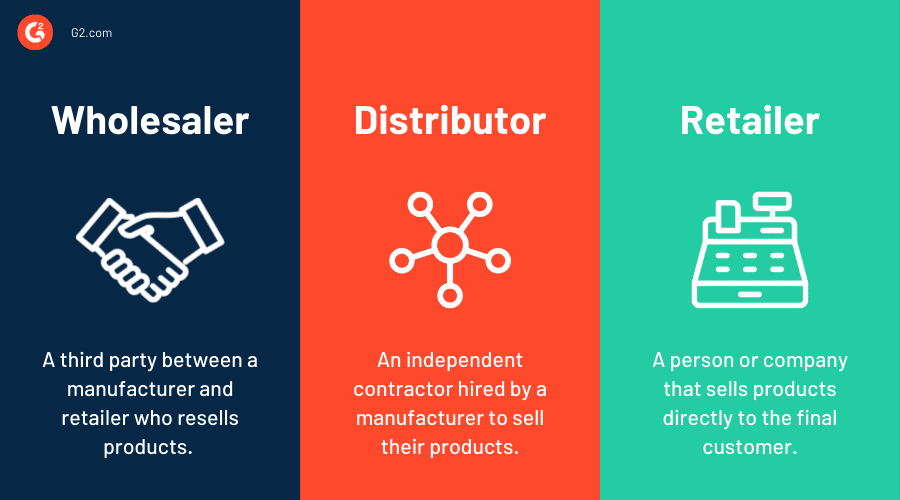
Wholesalers producing their own goods can sell them directly to customers. To get your goods in more places, you may establish a private label product and sell it to other merchants at a discount. Then, you can still offer that item at a retail price to customers directly on your website.
5 reasons to start selling wholesale
Many companies that are ready to sell in larger volumes consider wholesale as the next step of their business growth. Some wholesalers manufacture their own goods, while the others distribute goods made elsewhere. Regardless of where they are located in the supply chain, selling in bulk has a range of advantages, from higher unit sales to lower logistical costs due to fewer shipments.
If you’re a strong B2B player and consider diving into wholesale, check out the main advantages of eCommerce for wholesale and be aware of possible downsides you might face.
1. Avoid unnecessary expenses
In contrast to physical stores, wholesale eCommerce websites need less investments. The inevitable expenses are a warehouse, inventory management system, online store, payment and shipping services, and employee training. If you already have an online store, you can set it up to accept wholesale orders, for example, create extensive product catalogs to help your clients browse your inventory with ease. Recent surveys claim that online wholesalers can make 44% more money than physical store owners.
Due to larger volumes, wholesalers can negotiate cheaper prices when purchasing from manufacturers. Furthermore, some producers choose to work with wholesale distributors rather than retail sellers. If your overall cost is reduced, you can offer things in bulk to retailers at a lower price because you're spending less per unit. Since you're selling items in bulk rather than individually, you can also save your shipping and fulfillment costs.
2. Grow your business faster
The wholesale business model ensures more sales and less costs, therefore it has more space for growth. Additionally, you can reorder items more quickly, which will help your business expand faster than if you only use DTC orders. If you're a manufacturer selling in bulk, this approach will boost production while reducing overall expenses. Your profit margin would increase as a result. If you're a manufacturer or innovator, wholesale is a great opportunity to reach new markets and increase brand awareness.
Any company that wants to grow might face difficulties since the process involves numerous logistical and marketing challenges. It is easier to enter into new areas if you sell in bulk to a well-established retailer, which allows you to use their influence, distribution network, and client base. Indeed, other countries have different laws, but strengthening these ties can ease the task.
3. Streamline manual processes
Selling wholesale to retailers is often a complex process with numerous moving parts, time-consuming tasks, and extensive paperwork. That’s why over 70% of companies currently automate important business-related operations like inventory management, billing, and consumer checkout.
The automation of tedious procedures, like automatic reordering, can seriously streamline wholesale eCommerce. B2B buyers can effortlessly place their own orders without your direct involvement. It's also recommended to create custom pricing and discounts for specific customers or groups, automate and review customer signups, let customers purchase, track, and reorder products. Automated order recording and processing reduces the requirement for physical paperwork and handwritten records.
4. Build better relationships with clients
B2B buyers choose their wholesale suppliers carefully because they want to find a provider they can work with for a long time. Since wholesalers often serve a small number of B2B clients, you have a higher chance of building a reliable relationship with them instead of serving thousands of one-time clients each month. Contrary to DTC online sales, this results in greater average order values and inventory turnover rates for fewer B2B clients. This loyalty further translates into constant revenue for your company.
A 24/7 self-ordering system that customers can use without contacting the company’s representatives is one of the simplest yet powerful features used in wholesale eCommerce. Every customer will enjoy a straightforward ordering and purchasing process. Wholesalers should integrate this feature into their systems and use all of its advantages while also providing excellent customer service.
5. Get access to multi-channel sales
Online stores with a broad, high-intent client base, like Amazon or Alibaba, are low-cost, low-risk sales channels that expose your products to more potential customers. Any of these marketplaces make it quick and simple to create product listings, and doing so boosts your online presence thanks to the built-in SEO features. For these reasons, a lot of wholesalers start by creating listings on marketplaces before developing a multichannel selling strategy.
eCommerce website serves as your online "headquarters" and enables you to establish a brand presence, set your own customer service standards, and fully control your money flow. This sales channel will demand a larger time and resource investment, as well as ongoing update and maintenance. Although you will also be in charge of your marketing strategy, SEO optimization, and website traffic generation. This channel is likely to become the backbone of your multi-channel plan.
Social media and mobile commerce are newcomers in this sphere but they already make it easier for business owners to sell their items and clients to buy such goods using mobile devices. It's a fantastic chance to sell your staff automatically and increase your profit.
And 3 reasons to avoid wholesale
If there are winners of wholesale Internet sales, there should be losers. It doesn’t mean that the wholesale model is a “private club”, it’s just that your business may be not ready to sell in large quantities right now. It's probably not for you if you don’t have the capital necessary for bulk purchasing. The large discount given by manufacturers on each item purchased in large quantities reduces the total costs but may be a burden for small businesses with limited resources. Here are a few things you should consider before going wholesale.
- Large storage space. Due to the enormous number of products, having enough storage is essential and one of the restrictions for wholesalers. You'll need a location to keep the goods in storage until you sell them. So you'll need to rent a warehouse if you don't already have one. Beyond the physical space, you also need efficient warehouse and wholesale management systems. Keeping redundant goods in storage can be very expensive, therefore you need a well-established business model that is ready to scale.
- Brand identification via retailers. Wholesalers distribute their products through retailers. Thus, the latter are responsible for the brand identification of goods. It's not always possible for a wholesaler to have complete control over how their product is displayed. In addition, you won't be able to influence the prices they decide on.
- High website development & maintenance costs. It's quite difficult and expensive to create a wholesale website since it requires better speed, fraud and data security, payment and ordering automation than a common online store, let alone it needs to process and store large amounts of information on a daily basis. That’s why default features fail to meet the requirements of wholesale eCommerce and call for customization, especially if you expect high and rising traffic.
If you are sure you won’t fall into these holes and can battle the wholesale challenges, the next step is to choose a suitable eCommerce platform tailored to all your business needs. Learn more about the must-have features and how to use them to the fullest extent.
Choosing the best wholesale eCommerce platform
In a nutshell, a wholesale eCommerce platform is a complex application that helps a company selling large quantities of products and services to other companies manage and run its online store. Their main purpose is to make it simpler, quicker, and safer for customers to place orders and get the necessary goods in bulk at a reduced price.
To run a small online business, you can go with basic functionality in your eCommerce website. As time goes on, it becomes important to expand your online store with additional features if you want to take your business to the next level. It would be much easier to run and scale (if needed) your digital enterprise if you choose the best eCommerce platform for wholesale equipped with advanced tools.
Top eCommerce features you should look for
The most important characteristics of a wholesale webshop to take into account when seeking a suitable eCommerce platform are listed below.
1. Straightforward yet subtle design
When clients visit a B2B portal they expect to see an informative and easy-to-navigate wholesale eCommerce website design. Visual simplicity is the key when it comes to an efficient platform layout as the path-to-purchase for wholesale businesses is completely different, if compared to B2C. The biggest difference is that B2B customers are less inclined to "impulse buying". Online merchants who sell products directly to clients generally try to speed up the purchasing process, and take advantage of customers making quick purchases.
Smart product organization is essential for product catalogs with thousands of SKUs. As a result, features like a deep search and product comparison are no longer options but must-haves. The pricing display is another quirk in the UX design of wholesale websites that often provide a number of pricing options, including base cost, retail price, sale, and wholesale. On the structure level, placing a strong emphasis on white papers, case studies, and other helpful content adds immediate value to your website visitors.
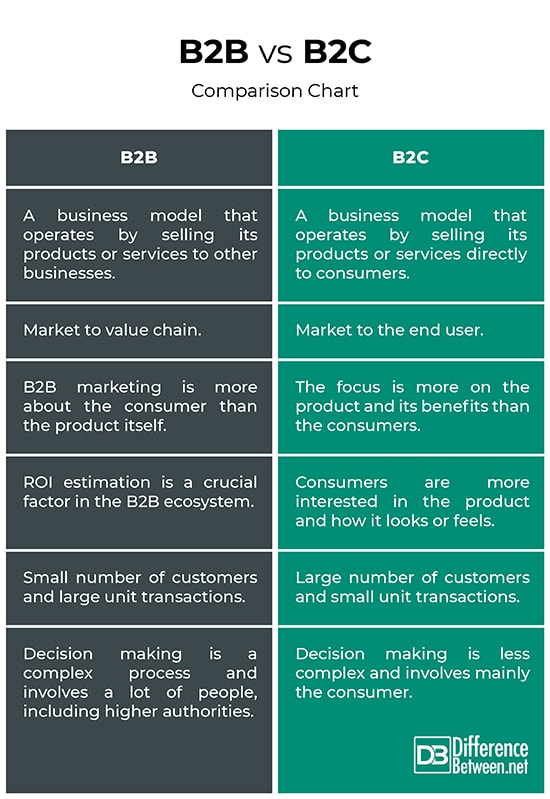
2. Easy back-end integration with extensions
Businesses in the B2B, distribution, and wholesale sectors need to build the most effective back office processes to protect profits and thrive in this fiercely competitive sphere. Order fulfillment, invoicing, and accounting should be streamlined and automated. So when you start optimizing your wholesale eCommerce platform and equipping it with more functions, you’ll integrate with third-party modules, tools, plugins and extensions.
ERP application embraces sales, finance, marketing, planning, human resources and inventory functions. They guarantee that you can sell through any chosen channel: online, over the phone, EDI, at trade exhibitions, or out in the field. A PIM helps to manage all the product data required for advertising and selling goods through distribution channels.
An OMS gathers and aggregates detailed sales data from numerous channels, including call centers, internet retailers, and physical stores. Other tasks, including inventory selection, tracking, receiving, and shipping, are handled by a WMS. A good eCommerce platform should have powerful built-in functions and a pluggable architecture to be extended with new payment gateways, additional security tools, shipping and analytical features, etc.
3. Flexible payment and pricing plans
Pricing may be the deciding factor when choosing goods and sellers, in case of bulk orders. As a rule, wholesale eCommerce platforms provide features to set different prices for different types of customers, items and their quantities. Make sure that the platform you chose supports various pricing models, for example, key-valued, customer value-based, surge, cost-plus and competitor-based. That way it’s possible to diversify demands and make different offers for certain types of customers.
The payment options available to wholesale buyers can be limited to a particular method. Even though a corporate credit card is frequently used, some companies may even choose to pay with a paper check or money order. If you sell wholesale online on a global level (or want to), you must also accept foreign payments. To attain this end, the chosen platform should support different payment gateways and ensure secure payment processing.
4. High mobile compatibility
Any wholesale eCommerce software must be mobile-friendly as more internet searches are now done through mobile devices. Therefore, any platform created for B2B buyers should be responsive and high-performing even on mobile. Experts predict that mobile eCommerce will account for 53.9% of all eCommerce sales.
eCommerce companies that heavily invest into their mobile presence should resort to native mobile applications. They are more streamlined, user-friendly, and easier to use on a smaller screen, let alone they are more effective at turning visitors into customers than websites with responsive design.
5. Multi-channel data synchronization
Selling through various platforms and channels is nothing new. It is being used by many online businesses, and they are getting fantastic results in terms of sales and money. This is why the smooth and accurate synchronization of data from various channels should be supported. It will simplify the process of managing, controlling, and updating information from your wholesale business, especially when you have to switch back and forth from one channel to another.
6. Advanced SEO and content marketing
Search engine optimization techniques make it easier to raise brand visibility, improve customer loyalty and boost sales. A full-fledged eCommerce platform should have such features as XML/HTML sitemaps, localizable URLs, breadcrumbs, etc. to make your online store more visible in the search engines. Even if you plan to ‘digitize’ your existing clients, it’s always better to optimize your eCommerce website and generate new leads on a daily basis.
To complement SEO and reach even more potential customers, it is necessary to choose a platform that allows you to work with different types of content. A built-in CMS will help you post instruction manuals, white papers, how-to articles, case studies, etc. for the needs of content marketing. If there are no built-in CMS features, search for a platform that can be expanded with more useful add-ons.
In addition to the above-mentioned features, a robust business-level eCommerce platform should include:
- Multi-store management through a single dashboard
- Complete order history and fast reordering
- Multi-language and multi-currency support
- Flexible shipping rates and free shipping options
- Anonymous online and one-page checkout
- Powerful security and anti-fraud tools
- Social media integration
- …and more functions that will help your wholesale website rock.
Keep in mind that not any eCommerce platform can meet the growing demands of the B2B market. It’s better to choose a wholesale eCommerce solution that comes with enterprise-level features out-of-the-box, like multiple shipping, several payment capabilities, account management, inventory availability, past order duplicating, bulk ordering, pricing, etc. Otherwise, you might save on the initial development costs but face serious scalability issues later on when you need to expand the functionality of your eCommerce platform.
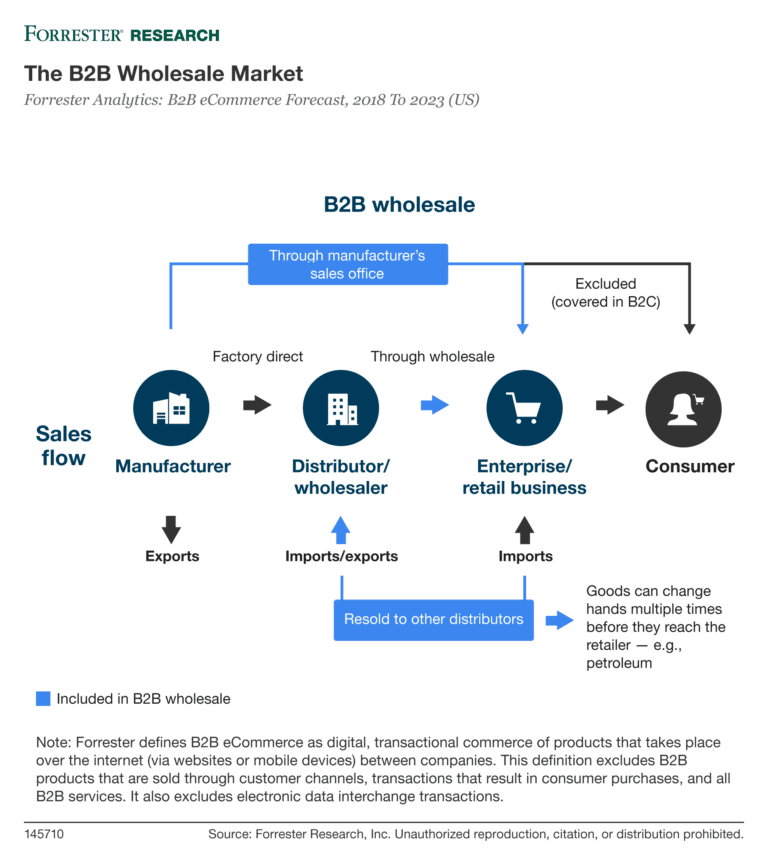
Why go wholesale with nopCommerce?
Thankfully, you won’t have such issues with nopCommerce! This open-source eCommerce software is equipped with advanced B2B features and can be further expanded with additional plugins developed both by the core team and by the dedicated community. Its wholesale capabilities include tier-pricing, bulk import and export of product data, customer roles setting, multi-warehouse support, and other helpful features. If you still lack some functionality, you can always integrate the system with CRMs, ERPs, CMSs, or customize it to suit the needs of your enterprise.
Using a headless approach, you can separate the front-end and back-end to create custom storefronts powered by the nopCommerce engine. The platform supports mobile commerce (which gains popularity among wholesalers and retailers) and allows you to create responsive web designs without extra development or extensions. All the above-mentioned features are available out-of-the-box and are completely free to use and customize.
you can find a few case studies showing how nopCommerce can solve B2B and wholesale problems, and decide whether it can fulfill your business tasks.
Hands-free management of millions of SKUs
The biggest headache of any large business is to record and manage the goods currently on sale or out of stock. It was the exact case of Caster Technology building its online presence. The company utilized an ERP system and integrated it with the nopCommerce store-front using the help of wholesale eCommerce developers.
The challenge: Dozens of online stores managed from a single admin panel
Upload 2 million SKUs stored in an ERP system to the new store automatically.
The result: 2 million SKUs were uploaded to the nopCommerce store without manual work. 12 web shops were created on a single platform, the plan is to go up to 50.
Now their online store is more like a catalog and customers need to call the company to get a quote. The next stage is to adopt the pricing structure and automatic taxation. Read more on the case here.
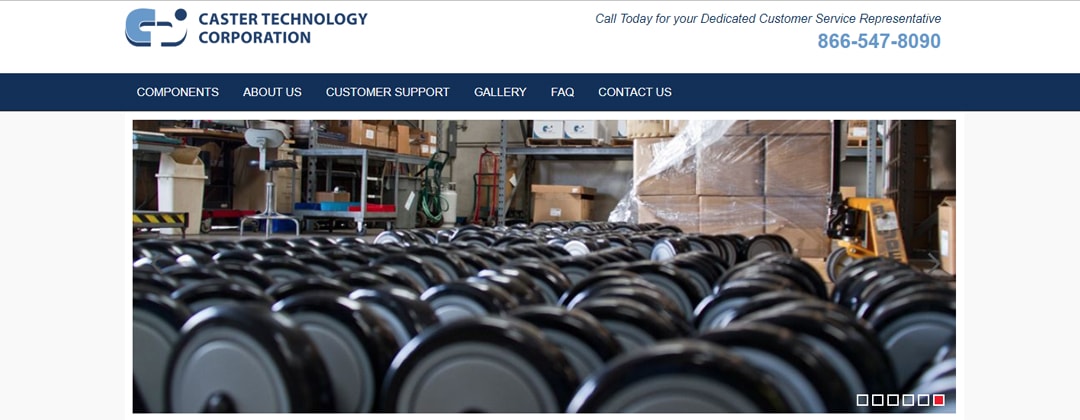
B2C-in-B2B without much trouble
As mentioned above, B2C and B2B sectors function in different ways and aim at serving different types of customers. Ofix, an office and school supply company, ran 25 live stores in Mexico and decided to work with both kinds of their target audience through one website. nopCommerce became a platform of choice as it can provide high-scale features and yet be tailored to the needs of a narrow business sector.
The challenge: Make the website capable of storing large arrays of data and serving wholesale visitors without compromising its user-friendly design.
The result: The website got custom B2B functionality and product catalogs. These changes bring 300,000 monthly visitors and increase the number of products to 10,000.
The wholesale version of the Ofix website was equipped with customized pricing lists, catalogs and logistic solutions, as well as large-scale marketplace features. Learn more about the case here.

Final word
For a while now, B2B wholesale has been a force to be reckoned with in the world of eCommerce. By focusing on growth and development of its digital presence, it is possible to increase the B2B wholesale market. The main driver of such growth would be the choice of a powerful eCommerce platform, like nopCommerce.
If you already run a wholesale company, the time has come to move your operations online and investigate the potential of a B2B platform for wholesale. Getting access to the latest technologies, you will not only keep up with progress, but also reach more customers and provide them with a better experience, which results in a stable order flow and income gains.
FAQ on wholesale eCommerce
If you read the article to this point, you probably want to learn more about wholesale eCommerce and eCommerce platforms for wholesalers. Our short Q&A session will provide more information on the aspects of wholesale eCommerce that we haven't covered above.
Q: Wholesale vs. dropshipping: which is better?
A: The main difference between dropshipping and wholesale is that dropshipping allows to contract third parties for order fulfillment, shipping, and inventory management, while wholesale requires that you do these tasks on your own.
Dropshipping is a zero-inventory distribution model. This approach eliminates a lot of complicated logistics because the retailer only needs to facilitate the sale and never has to deal with the product directly. To ensure the guarantee service, it is enough to find a high-quality and reliable after-sales service provider. The model has its drawbacks, though, since products are not free to ship and have a high unit cost, let alone numerous after-sale issues and other problems of dropshipping.
The wholesale model is more suitable for large-scale retailers with a well-established brand and financial resources. When buying in bulk, companies have more control over the quality of goods. Additionally, the wholesale unit price of commodities is cheaper, and wholesalers can set their own prices. The biggest drawback is that they should assume the risk of having too many unsalable items on hand, still they benefit from providing immersive brand experiences and attracting new consumers.
Q: What are wholesale website examples?
A: Today there are numerous wholesale websites for business that are active and attracting millions of visitors each month. You can examine a few of them and adopt their best features in your own eCommerce website.
- Alibaba is one one of the world’s biggest online marketplaces for wholesale suppliers. It offers the widest selection of goods, provides access to products from Chinese verified suppliers, and has a reliable system to classify and evaluate each supplier.
- SeeBiz connects manufacturers, distributors, wholesalers, and retailers from the USA. This is a new wholesale marketplace and business networking platform featuring wholesale products from more than 650,00 certified merchants. There are items from over 10 major industries, including food, apparel, health, etc.
- Costco is an American company that ranks fifth among the largest global retailers. Through a distinct website called Business Center that focuses mostly on product sorting and packing for reselling, Costco provides various benefits for online small and medium companies (SMBs).